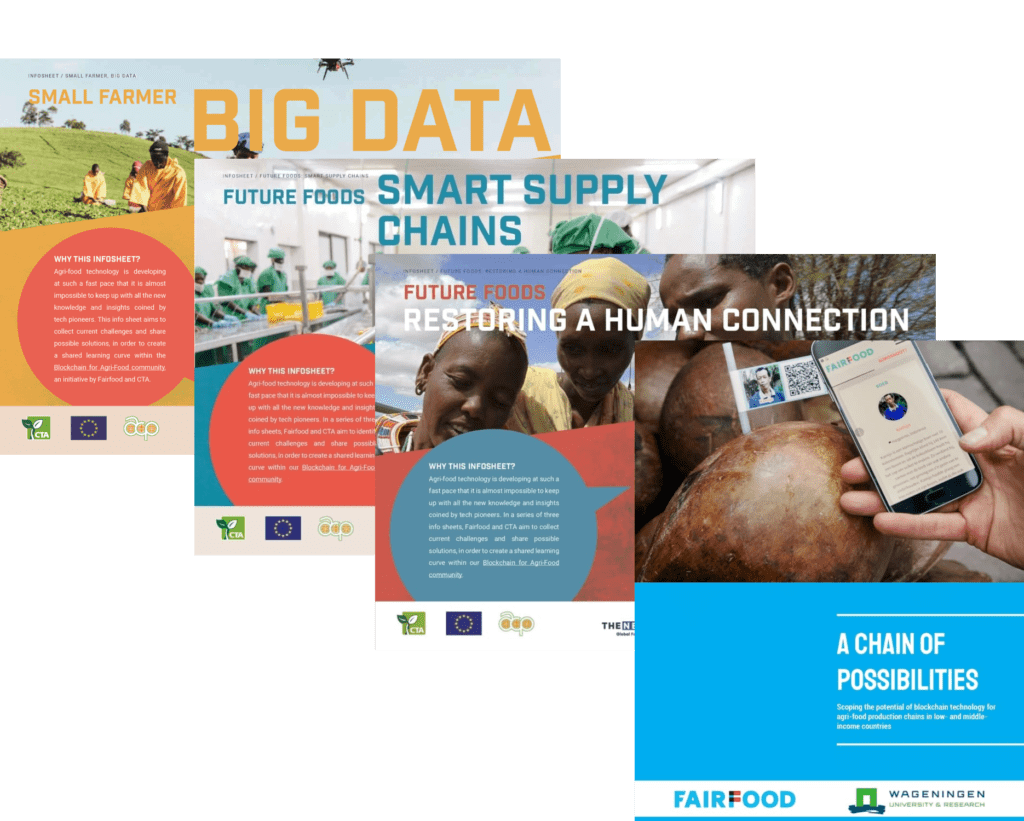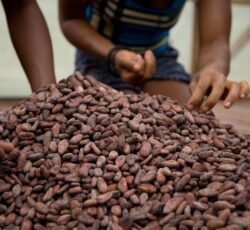How blockchain can help smallholder farmers: prove (ownership)
At Fairfood, we identified nine ways in which blockchain technology can empower smallholder farmers. In a new blog series, we will dive into these nine topics, looking at interesting use cases and reports. In this post, guest blogger Kirsten Coppoolse of The New Fork elaborates on point 7: prove brand promises and ownership claims.
As the article 9 ways digitalisation and blockchain can help smallholder farmers already outlines, smallholders are struggling to earn a living wage. Digitalisation and blockchain can help improve the lives of smallholder farmers by providing access to information, by giving farmers tools to communicate and by automating processes.
Sharing information
Smallholder farmers are often based in rural areas, far away from their consumers. Since they are at the beginning of the food supply chain, they often don’t get to interact with the end consumer; the farmers might not even know what the end product of their hard labour looks like, or how it tastes. One consequence of the way food supply chains are currently structured, is that the farmers miss out on the opportunity to share information about their product and, the other way around, to collect information about consumer preferences.
In today’s economy, in which consumers are slowly starting to value quality over quantity, trusted quality claims could result in a higher price, making a huge difference in the farmer’s life. In order to convince everyone else in the supply chain that certain claims about a product are true (think of fair trade, organic or biofortified), documentation is needed. At this stage, smallholder farmers don’t document a lot about their products and the production processes behind them. It takes up valuable time, and tools to document and share the information with other actors in the supply chain are scarce and costly.
Certification
A known way to attach information about quality claims to a product is certification. However, certification at this point is time consuming and costly. It’s not always possible for smallholder farmers to have a clear insight in the costs and benefits of the certification process. Wageningen University and Research actually claims that certification may only be beneficial for the more affluential smallholder farmers, who produce above average volumes.
Blockchain is increasingly proving itself as a potential alternative to certification. It allows independent third parties to verify claims that smallholder farmers make. While the technology is currently mainly known for its financial use cases, blockchain for food might just be the most interesting use case. As Fairfood, CTA and Wageningen University & Research put it in the report A Chain of Possibilities: “BCT (blockchain technology) offers the ability to go beyond certification. Instead of having one central certification body to safeguard and control a general claim such as fair-trade, BCT provides the ability to verify a specific claim related to a specific product batch directly from the source.”
Blockchain for food
Blockchain for food is about supply chains. Blockchain can be used to communicate all sorts of information from farm to fork and the other way around. At The New Fork we acknowledge three gains from implementing blockchain in food supply chains: supply chain optimisation, risk management and improved integrity.
Supply chain optimisation is pretty straight forward: better and trustworthy information sharing leads to better planning and communication, and better insights into cost cutting opportunities (if you want to read in greater detail how this works, download the info sheet at the bottom of this page). Looking at risk management, examples can be found in the monitoring of allergens or the facilitating of fast, targeted food recalls. Examples of improved integrity are the creation and monitoring of a more circular and sustainable food supply chain.
Proving brand promises and ownership claims touches upon the reduction of risks and the improved integrity. Firstly, the use of blockchain by farmers as a means to share information about their product with the rest of the supply chain reduces risks, for example the risk of a lack of vitamins if consumers think they are buying biofortified products when actually they are buying regular products. At the same time, it could provide the smallholder with the opportunity to charge a higher price, since he or she can make claims that can actually be proven.
Fraud free food
How does proving a claim with blockchain work? First of all, a claim needs to be made that can actually be proven. Think of claims such as ‘slave free’ or ‘free of allergens’. In a recently released report, The New Fork, Harvest Plus and CGIAR explore how blockchain can help with biofortification claims in the Nigerian maize supply chain. In this case the claim that was made about the product (maize) is that it contained extra A vitamins because of biofortification, which has benefits for consumer’s health. While biofortified maize looks different from regular maize (it’s actually more orange) it is of course hard to verify for a smallholder when buying maize seeds or for a consumer who is buying processed maize. This poses the risk of fraudulently selling non-biofortified maize products as biofortified maize products.
Blockchain can help with verifying the claim that the maize that a consumer buys is indeed biofortified. The technology allows for the uploading of proof at every stage of the supply chain. Involved smallholder farmers would for example scan a QR-code (like the QR-codes from ScanTrust) on a bag of seeds and verify the product is authentic and untampered with. The farmers then uploaded their own information, for example data about production methods.
In a blockchain, all uploaded data are shared with the whole network. It’s not possible to retroactively change the data, since third parties on the blockchain who are verifying the data for a small fee will then mark the information as incorrect. With certification, consumers have to trust that the auditors of the certificate have checked the claim. With blockchain, this is no longer necessary; consumers can see the information for themselves.
A new era
Proving claims from smallholder farmer’s is only the beginning. Blockchain has additional ways of helping smallholder famers and their customers that get The New Fork very excited. To name one: when sharing the whole production process in an immutable way, food safety can be seriously improved. It will be easier to detect fraudulent actors in the supply chain. Moreover, possible recalls of a product, for example when a certain batch of products turns out to contain too much pesticides, are made easy since the full journey of the product is known.
Ultimately, blockchain can make a serious contribution to a new era in which we realise a restored connection with the origins of our food – one in which we take greater care of each other and the world.
The New Fork brings new technologies like blockchain to agri-food to accelerate global food integrity. The organisation is a tech partner for agri-food companies, from farm cooperatives to retailers, and services the whole implementation process, from education to architecture design and the development of blockchain.
Part of its educational activities is the Strike Two Summit. During this summit, the food supply chain comes together to develop and commit to the execution plans for pressing global issues.
Find out more
—
This article is made possible with the financial assistance of CTA (Technical Centre for Agricultural and Rural Co-operation). The views expressed above can in no way be taken to reflect the official opinion of CTA.



